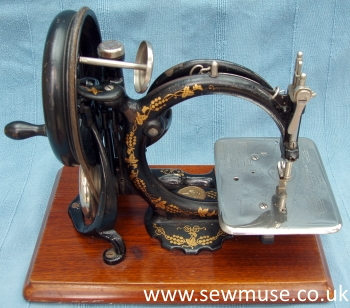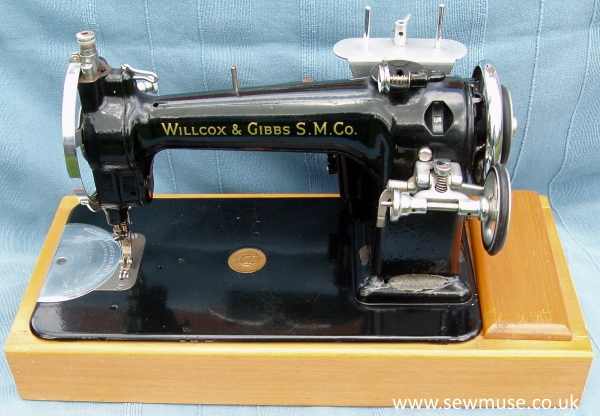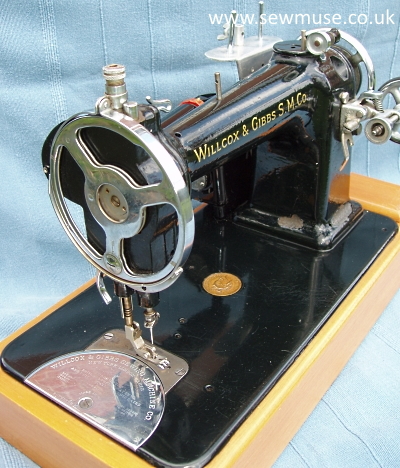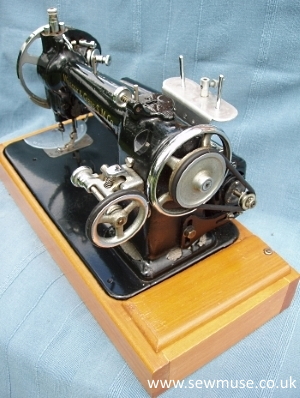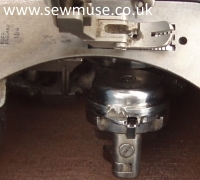The Willcox & Gibbs Sewing Machine Company was founded in 1857 by James Edward Allen Gibbs and James Willcox with the first machines being finished in November 1858.
The company had a London office in 1861 at 1 Ludgate Hill and this moved to 135 Regent Street in 1864. By 1871 the company opened a second office as its Chief Office for Europe at 150 Cheapside, London, this office was later moved (post 1885) to 94 - 96 Wigmore Street, then 37 & 39 Moorgate Street (by 1891 to post December 1908) and by December 1909 20 Fore Street, London.
Right from the initial production the manufacturing of the Company's single thread, chain stitch machine was undertaken by Brown & Sharpe, Rhode Island and this continued up until 1948.
A special hand crank mechanism was produced in England for the European market, but the general design of the Willcox & Gibbs remained essentially the same throughout its production. The only major improvement was in 1875 when the glass tension discs were replaced with an automatic tension device which ensured the machine could not get out of adjustment.
In addition to the domestic hand and treadle machines the company produced a wide range of industrial models.
The Company finally closed in 1973.
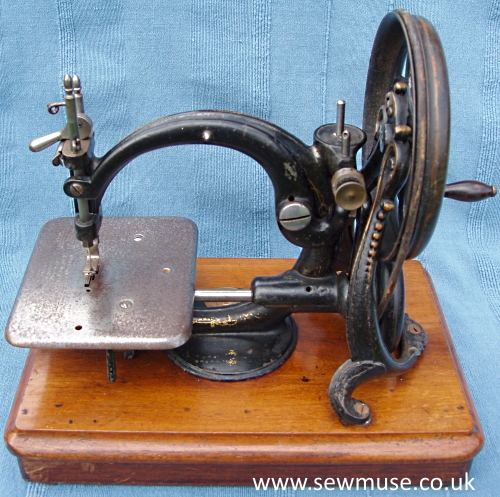
Willcox and Gibbs: Serial No. 158679.
This Willcox & Gibbs came complete with its wooden carry case. The machine was made in America in the late 1860's but it has the ornate hand crank produced at Coalbrookdale near Telford, England which was, in Victorian times, renown for producing high quality ornate iron castings. This machine has the glass tension discs which were used on domestic models until 1875. The Willcox & Gibbs badge is located on the rear of the base casting and it also has a deep wooden base.
The cloth plate has various American patent dates, four dating between 1857 & 1860 relating to J. E. A. Gibbs, three dating between 1860 & 1864 relating to Charles Henry Willcox (son of James Willcox), the machine was also licensed under five other patents including the infamous Elias Howe patent of 1846.
There are only two English patents one for J. E. A Gibbs and the other for James Willcox.
Follow this link to a FREE copy of the:
Willcox & Gibbs Manual (Glass Tension)
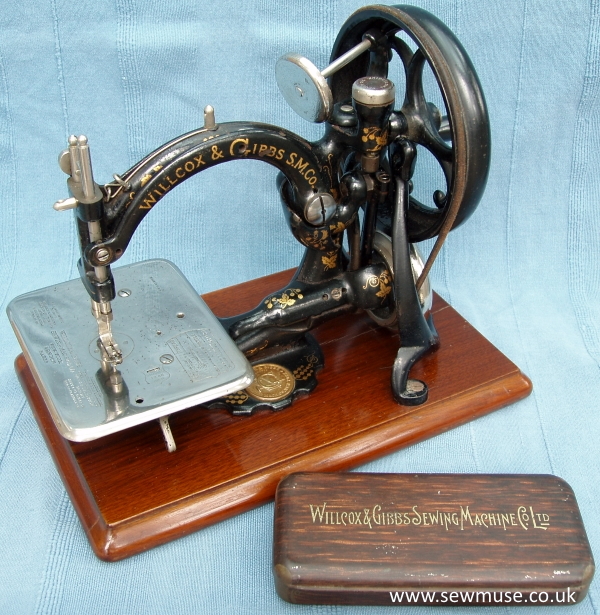
Willcox and Gibbs: Serial No. B535535.
Made in America in 1902 this example has the less ornate but still elegant hand crank gantry produced for the European market.
The cloth plate has a stitch length indicator as well as various patent dates the last of which is 17 April 1883.
Note the automatic tension device just below the shaft of the bobbin holder.
The base of this machine is scalloped which is unusual and it is oft said this was done to remove casting defects. I'm not so sure as it would have been far easier to scrap the rough casting and put it in the melt!
However the B prefix to the serial number seems to have been used on all Willcox & Gibbs machines with scalloped bases.
Along with the machine came an accessory tin which included the needle wrench, two needles in their original packet along with a receipt for them dated 15 Aug 1940.
These were sent by the Company to a lady in Barnet, London which means this machine survived the London Blitz which started just 3 weeks later!
Willcox and Gibbs: Serial No. A539298.
This Willcox & Gibbs came complete with its wooden carry case which is shown on the Cases and Bases Page.
It was made in America in 1903. The cloth plate has a stitch length indicator as well as various patent dates for both the U.S.A. and Great Britain the last of which is 1894.
Willcox & Gibbs High Speed Lock-stitch Type 10: Serial No. L 72199
The Willcox & Gibbs High Speed lock-stitch machine was introduced in 1899. It was designed for manufacturing purposes and could produce up to 4,000 stitches per minute in factory conditions.
This machine probably dates from the 1950's and was manufactured in America. The machine heads would have been shipped to Great Britain and a wooden base and motor added. The company seem to have used motors produced by Hillman.
Other than some Japanning flaking round the base of the pillar this machine is generally in good condition and unusually has retained the brass boss on the bed which is often lost. Note the bobbin winder mounted high on the pillar - on standard factory machines this was mounted on the bed of the machine.
The unusual design of this machine is simply stunning but belies the fact that this is a heavy weight industrial machine. A version with automatic lubrication was also produced known as the Type 10a.



